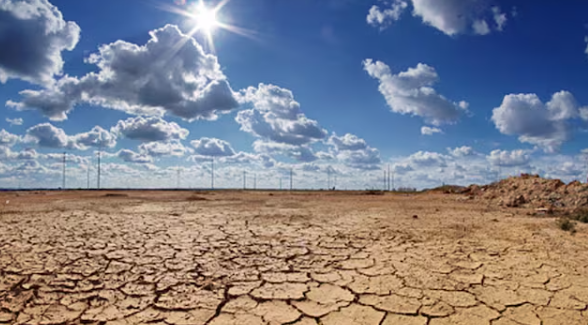Study Reveals India’s Districts Facing Extreme Weather Crisis
A study titled Managing Monsoons in a Warming Climate has highlighted concerning trends in extreme weather across India. According to the study, nearly 84% of districts in the country are experiencing severe heatwaves, and 70% are seeing an increase in heavy rainfall, especially during the monsoon season. The study predicts that by 2036, 8 out of every 10 Indians will be affected by extreme weather. This report, created by IPE Global and ESRI India, examined temperature and rainfall data from 1993 to 2022, showing a significant increase in both the frequency and intensity of extreme weather events over the past 30 years.
Heatwaves and Rainfall Trends
Here are some key findings from the study:
- The number of days with heatwaves from March to September has increased fifteenfold from 1993 to 2022.
- In the last decade, the number of extreme heatwave days has increased nineteenfold.
More than 62% of districts that experienced heatwaves between October and December are now also experiencing irregular and excessive rainfall.
Impact of Climate Change
As the atmosphere gets warmer and more humid, the likelihood of heatwaves, especially in tropical regions like India, is increasing. Recent events, such as landslides in Kerala caused by heavy monsoon rains and the shutdown of cities due to extreme weather, are clear examples of the growing climate crisis.
Affected Regions
The impact of extreme weather is felt differently across various regions in India:
- Coastal Areas: States like Gujarat, Tamil Nadu, Andhra Pradesh, Odisha, and Maharashtra are affected.
- Plains: States such as Uttar Pradesh, Rajasthan, Madhya Pradesh, Chhattisgarh, Haryana, Punjab, Telangana, Bihar, and Delhi are experiencing these changes.
- Hilly Areas: Regions including Tripura, Mizoram, Jammu and Kashmir, Uttarakhand, Meghalaya, and Himachal Pradesh are also seeing the effects.
About Extreme Weather Events
The report also discusses how climate change is making extreme weather events like heat waves, floods, and hurricanes more common. For example, the deadliest heatwave ever recorded occurred in 2003, causing over 70,000 deaths in Europe. In 1991, the eruption of Mount Pinatubo led to a temporary global temperature drop of 0.5°C. Tornadoes can produce some of the strongest winds on Earth, exceeding 300 mph. The Great Flood of 1936 affected over 1 million people in the United States. Deforestation is making flood risks worse, and El Niño events are making storms more intense.
What is Heat Risk Observatory?
The Heat Risk Observatory monitors extreme heat events globally. This organization uses satellite data to analyze temperature patterns and predict heatwaves. It was established in collaboration with various climate organizations and focuses on the public health impacts, particularly in vulnerable populations. The observatory uses predictive modeling to warn local governments about potential heat risks and has a database of historical heat events to help with research. It also runs campaigns to raise awareness about heat safety and takes an interdisciplinary approach, combining meteorology, public health, and environmental science.
Month: Current Affairs - August, 2024
Category: Environment Current Affairs







